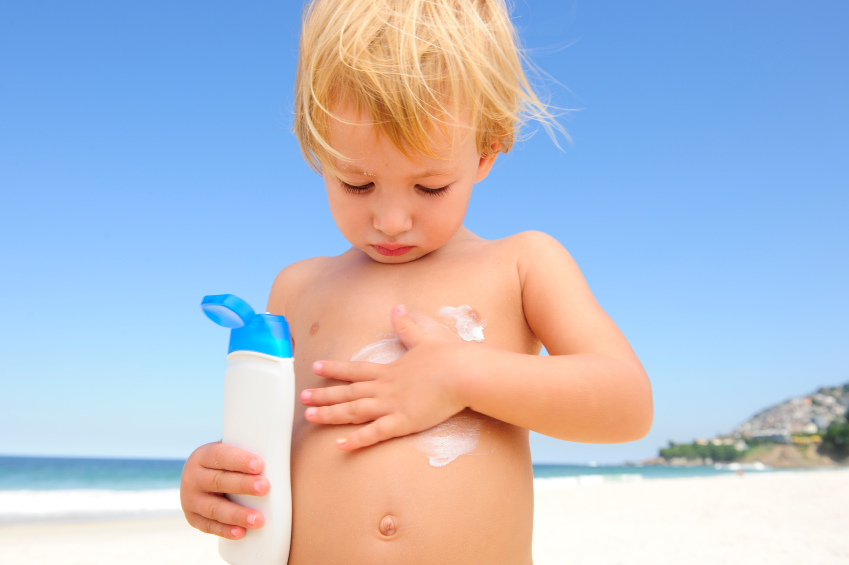Please tell me I’m not the only mom who is constantly slathering SPF 50 sunscreen on their face and body throughout the day, even in the dead of winter, when there is a blizzard outside. Call me crazy (or call me Casper) but I am terrified of sun damage. This may seem odd coming from a Southern girl that I could have been mistaken for the Coppertone baby throughout her childhood. Yes, I was always a tan little biscuit, but when I learned in my teens that skin cancer (and more importantly melanoma) was prevalent in my family history, I immediately started using sunscreen everyday.
Since May is Skin Cancer Awareness Month, and since I live in one of the sunniest states in the country, I wanted to do research on the best sunscreen products for infants and children.
My pediatrician (and the FDA) doesn’t recommend applying sunscreen of any kind on infants 6 months and younger. Infant skin under 6 months of age is very sensitive, so exposure to the chemicals in sunscreens may be much greater, thus increasing the chance of side effects.
After talking with my pediatrician, dermatologist and doing my own research (EWG.org is a great resource) I have combined a list of highly recommended natural sunscreens for children. I have also listed ingredients that are recommended to avoid. *
Ingredients to avoid:
Two sunscreen ingredients I mainly recommend avoiding is Oxybenzone and Retinyl (aka Vitamin A).
Oxybenzone is linked to hormone disruption and can cause allergic reactions. It also creates free radicals when exposed to the sun that are harmful.
Retinyl (Vitamin A) may cause tumors and lesions to develop more quickly when exposed to the sun. It’s also linked to heightened risks of skin damage and cancer. It can also cause free radicals that damage the skin.
I will also avoid sunscreens that contain Parabens, Phthalates, PEG’s (polyethylene glycols), Propylene Glycol, Phenoxyethanol, SLS/SLES, mislabeled nano-particles and a variety of other chemicals. Basically, I want the sunscreen I use on my child to contain a considerable amount of natural ingredients.
After my research and discussion with medical professionals, I personally recommend choosing a “physical” or “chemical-free” sunscreen made with zinc oxide or titanium dioxide. Unlike chemical based sunscreens, zinc oxide and titanium dioxide sit on top of the skin, forming a barrier against the sun’s rays. You may have heard you should look for a “broad-spectrum” product that protects against both UVA and UVB rays. Any sunscreen that contains the physical blocker zinc oxide or titanium dioxide will do this. Things to note, make sure to be mindful of the expiration date on the label and peak sun hours between 10am-2pm.
Twitter- @julssolomon





